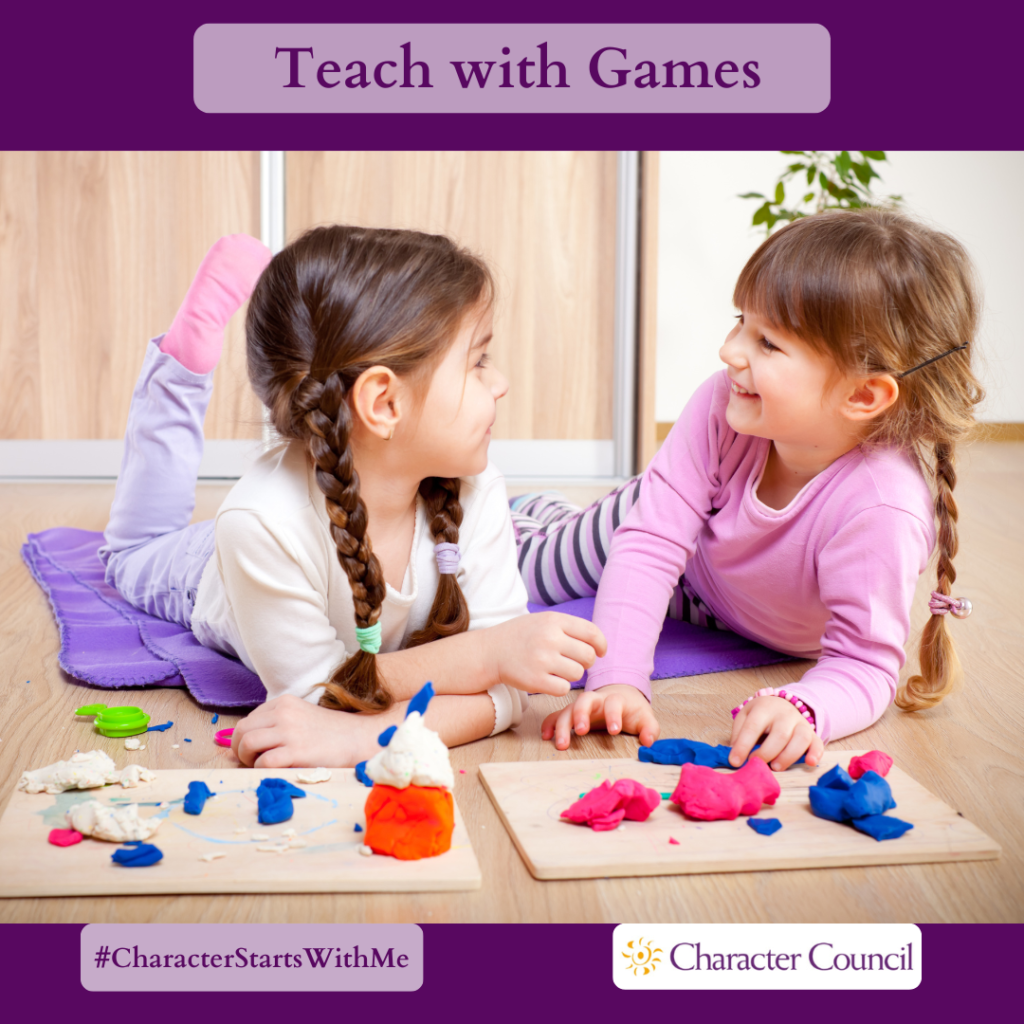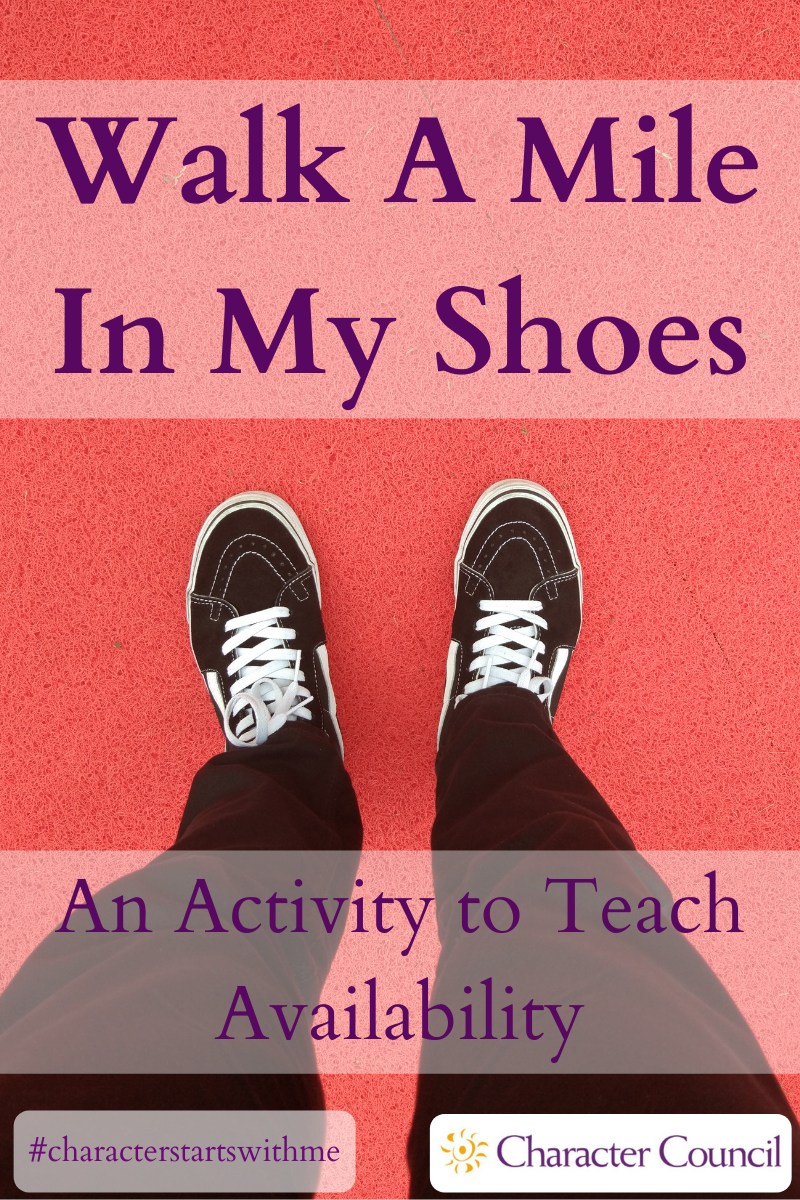
Availability Activities
The activities here are fun ways to teach character. The game aspect makes the lesson more memorable. Each activity has processing questions at the end. Without processing the activity, the exercise is just a game. To make it a stronger lesson when you process it, relate the character quality to a core value that your organization promotes.
Consider picking a student to run the activity. You will need to give them time ahead of the activity to prepare. Another option is to pick a few students to run the activity for a younger classroom after you have run it for your class. Encourage your students to repeat it in the home for younger siblings or even parents.


Movie Credits
Pick a recent movie that would be popular for the age group of your classroom. Ask the class who made the movie. You will most likely get back the names of the actors. For younger students, you may want to start with the next question. Besides the actors, ask them who else works on a movie. You get answers like director, producer, music, costumes, etc. Ask students to recall how long it takes for the credits to roll at the end of the movie. If you have the ability to show a video/DVD, then show just the credits to reinforce just how many people it takes to make the movie. You may want to freeze-frame on some of the more unusual roles. Point out that everyone needed to be available to do their job for the movie to be a success. Not all of them can be the stars. Compare making a movie to running a school. Have the students create a list of credits for the school, identifying all the people and groups it takes to run a school. Be sure to go outside of the school, including parents, business partners, sports affiliations, district personnel, board members – even the state board of education.
To process the activity, ask these or similar questions:
- Was it fun to look at all the roles in making a movie?
- Were you surprised at how many there were?
- Do you think that each person did their own job regardless of others’ work, or did they need to work together?
- Was it easy to identify all the people who work to make school days successful?
- What are some of the things that can go wrong if somebody doesn’t do their job or doesn’t do their job well?
- How does it feel to be on the receiving end of all that work?
- What “teams” do you play on? Who benefits from the important work that you do?
- Will you remember this when it is time to do your chores or help someone out?

Tubing
This exercise requires cardboard tubing such as empty wrapping paper or paper towel rolls. If there is no time to get enough for each student, they can each make one out of a sheet of construction paper or cardstock. The paper can just be rolled and held on both ends or taped into place. If your class is older and the average shoulder width is wider than the paper’s length, you will need to tape two sheets together lengthwise for each student. Divide the students into two teams and line them up, shoulder to shoulder, into two lines, one for each team, facing each other. Based on the number of students and the size of your space, you may need to adjust the number of teams. You will need a marble or small ball for each team that are identical. The object of the game is to let the marble roll through the tubes from one end of the line to the other. The first team to get their marble to the end, without dropping it, wins. A dropped marble needs to be started over at the beginning. To make it more complicated, when each team member finishes passing the marble to the next person, they must run to the end of the line and be ready to catch it again. You may need the hallway or gym. This version of the game takes more skill with smaller teams and short tubes as you must slow down the marble so that each student has time to get to the end of the line.
To process the activity, ask these or similar questions:
- When you heard the game was tubing, did you think we were sledding on snow?
- Was it fun to pass a marble this way?
- What happened if one person failed?
- Could you help someone if they struggled?
- How did it feel when everyone was available for their turn, and the marble did not drop?

Walk A Mile In My Shoes
Start this exercise with a discussion of what it means to Walk A Mile in My Shoes. After there has been some discussion on the topic, introduce the concept of empathy – the ability to recognize and share in someone else’s feelings. To “cure” self-centeredness and practice availability, we have to be able first to recognize another person’s feelings and needs. Create some “feelings” cards. (There are some websites below with free flashcards.) You can make cards with pictures of people expressing feelings or cards with the words on them, and the students must demonstrate them for each other to guess what they are portraying. For older students, you could also play it like Pictionary, where the students are to draw pictures that express emotions for the others to guess. The last link in the first list below is a bingo game using emotions.
www.mes-english.com/flashcards/feelings.php
www.toolsforeducators.com/feelings.php
www.bingocardcreator.com/bingo-cards/human-behavior/feelings
For Grades 9 – 12: The Nemours Foundation has created a resource for Teaching Empathy. See
www.kidshealth.org/classroom/9to12/personal/growing/empathy.pdf
When finished, process the activity with these or similar questions:
- What is it like to wear someone else’s shoes literally?
- Was it fun to guess the feeling?
- Do you ever think about what your face looks like when you have these feelings?
- Will you use these exercises to help build your empathy in the future?